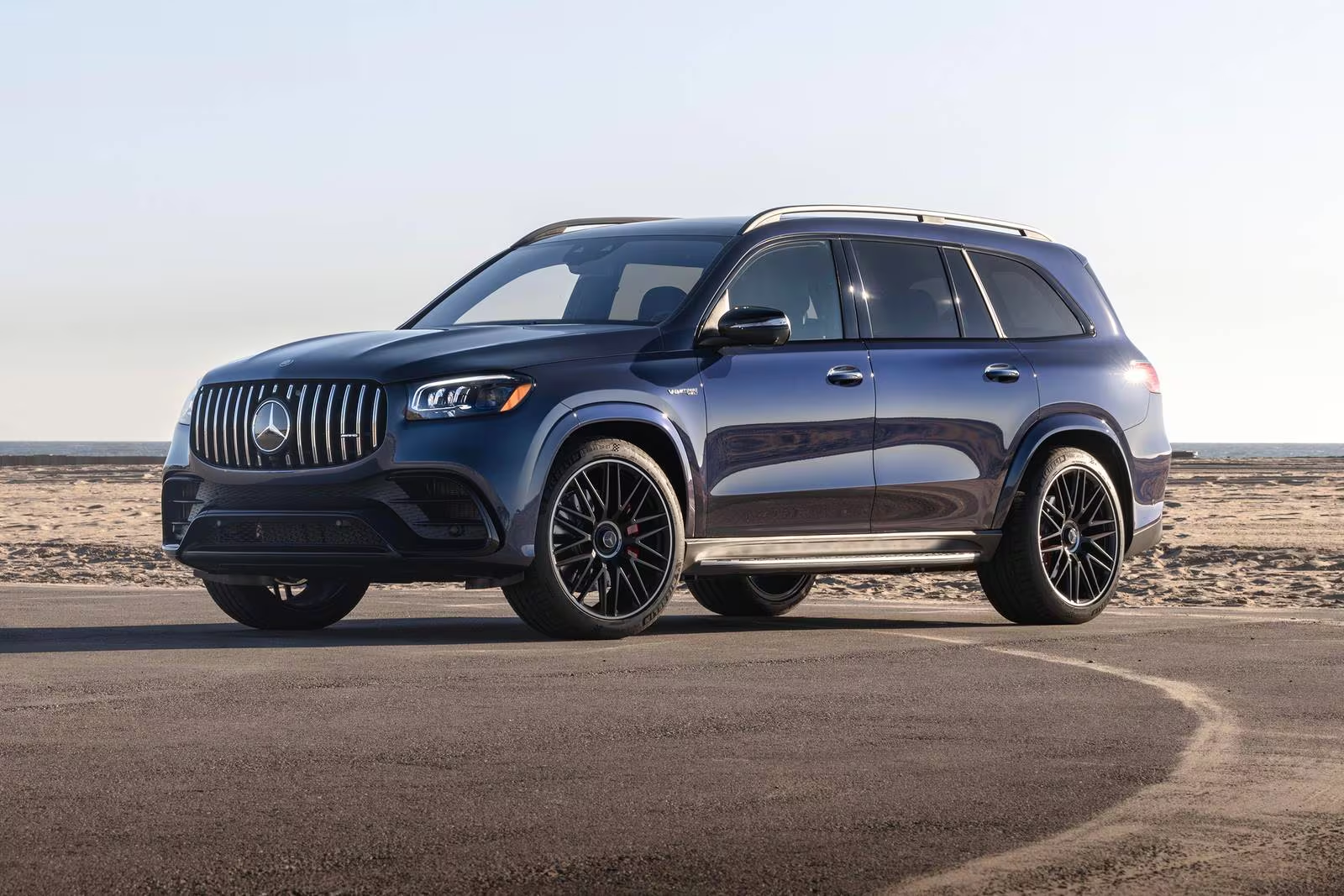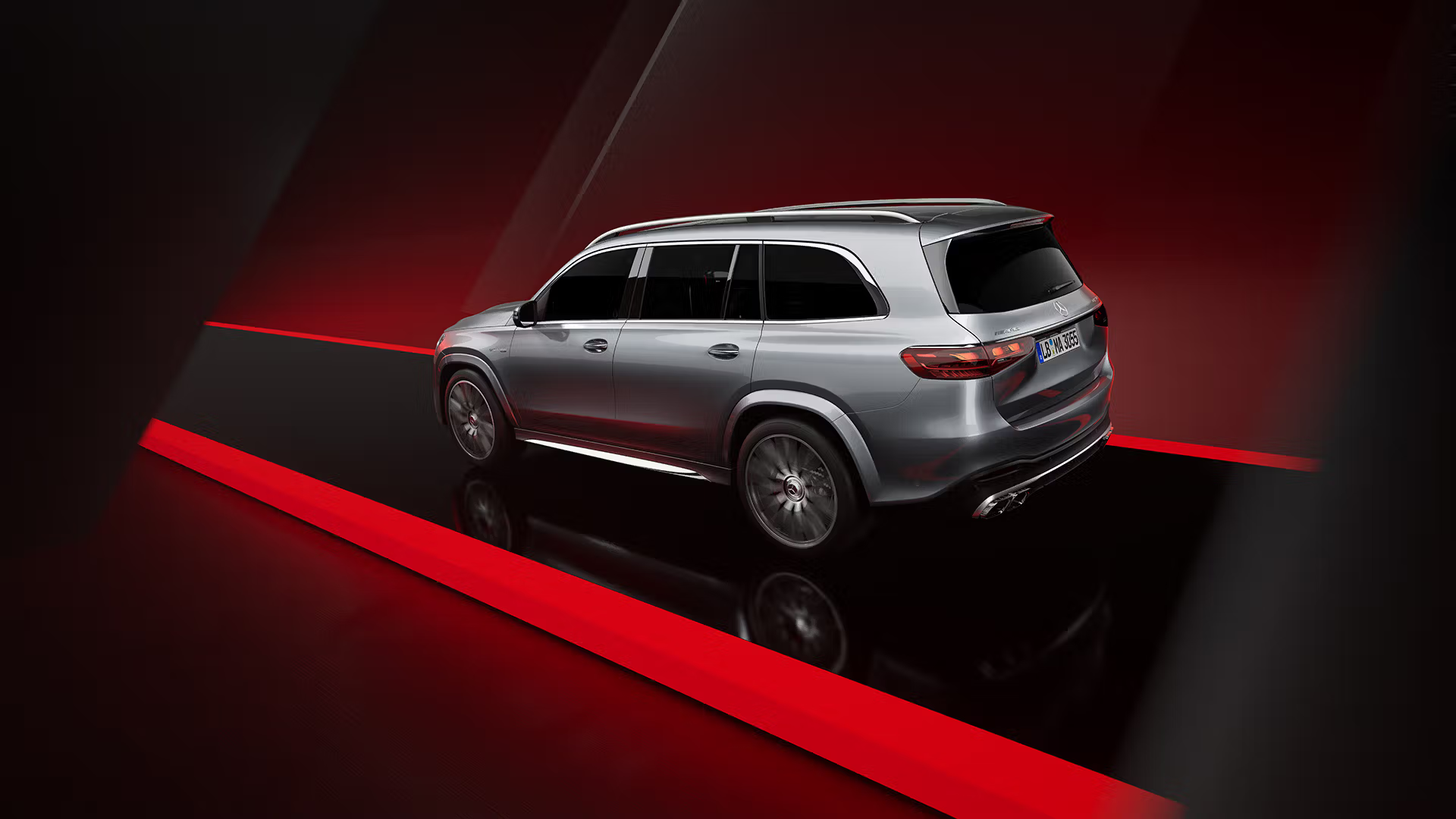Introduction
In the world of luxury automobiles, size often translates to presence, prestige, and performance. Among the many contenders in the full-size SUV category, Mercedes-Benz has long held a position of authority. Known for crafting some of the most refined and technologically advanced vehicles in the market, the German automaker caters to customers who demand the very best in design, in performance, and, yes, in size.
So, what is the largest Mercedes SUV?
Enter the Mercedes-Benz GLS. Often referred to as the “S-Class of SUVs,” the GLS has earned its reputation as the brand’s flagship SUV, offering three rows of supreme comfort, powerful engine options, off-road capability, and cutting-edge technology. Whether you’re looking for the ultimate family hauler, a high-performance powerhouse, or a chauffeured lounge on wheels, the GLS comes in multiple variants—including the ultra-luxurious Maybach GLS and the dynamic AMG GLS 63.
In this article, we’ll take you through the evolution, dimensions, interior features, performance capabilities, and luxury variants of the GLS, comparing it to other Mercedes SUVs, including the EQS electric SUV and the iconic G-Class, to help you understand why the GLS is truly the largest and most versatile SUV Mercedes-Benz offers.
The Evolution of the Mercedes-Benz GLS
From GL-Class to GLS: A Luxury Legacy

Mercedes first introduced its largest SUV in 2006 under the name GL-Class (chassis code X164). This was the brand’s first full-size luxury SUV designed to accommodate up to seven passengers comfortably. Built in Tuscaloosa, Alabama, it was an immediate hit, particularly in North America, where large SUVs are in high demand.
In 2015, Mercedes restructured its naming convention, rebranding the GL-Class as the GLS—positioning it alongside the S-Class sedan in terms of status and luxury. The second generation (X166) refined the vehicle’s design, added cutting-edge tech, and further improved its ride comfort.
The third-generation GLS (X167) launched in 2019 and remains the current version. It brought with it significant upgrades in size, technology, and luxury. Designed to be bigger and bolder than ever, it is this model that holds the crown as the largest Mercedes SUV.
Size Matters: Why the GLS Is the Largest Mercedes SUV
Let’s talk numbers. Among all the SUVs in Mercedes-Benz’s lineup, the GLS is the longest, tallest, and most spacious.
| Model | Length (mm) | Width (mm) | Height (mm) | Wheelbase (mm) | Cargo Capacity (cu ft) |
| GLS-Class | 5207 | 1959 | 1823 | 3135 | 17.4–84.7 |
| EQS SUV | 5125 | 1959 | 1718 | 3210 | ~23–74 |
| G-Class | 4817 | 1931 | 1969 | 2890 | ~38 |
- GLS 580 and GLS 450 models offer three rows of seating for seven passengers.
- The GLS Maybach offers ultimate luxury for four to five passengers.
- Cargo space maxes out at nearly 85 cubic feet with seats folded.
While the EQS SUV comes close in wheelbase and interior innovation, it doesn’t quite match the overall size and passenger space of the GLS. The iconic G-Class, despite its height, is smaller in length and width and has less interior space.
Interior Comfort and Technology
Step inside the GLS and you’re greeted by a cabin that rivals the most luxurious sedans. Mercedes-Benz has outfitted the GLS with premium materials, ambient lighting, and state-of-the-art infotainment.
Seating
- Three rows for 7 passengers (optional 6-seat executive layout).
- Power-adjustable, heated, and ventilated front and second-row seats.
- Optional massaging seats and rear entertainment.
Infotainment & Technology
- MBUX infotainment system with dual 12.3-inch screens.
- Augmented reality navigation and natural voice recognition.
- Burmester surround sound system for immersive audio.
Cargo and Versatility
With all seats up, the GLS provides 17.4 cubic feet of cargo space—enough for groceries or a few suitcases. Fold the third and second rows, and you’re looking at nearly 85 cubic feet, ideal for road trips or hauling gear.
Performance and Engine Options
The GLS doesn’t just look imposing—it moves with surprising agility for its size. Mercedes-Benz offers a range of powertrains to suit different preferences:
GLS 450 4MATIC
- Engine: 3.0L inline-6 turbo with EQ Boost
- Horsepower: 375 hp
- 0–60 mph: 5.8 seconds
- MPG: ~20 city / 24 highway
GLS 580 4MATIC
- Engine: 4.0L twin-turbo V8 with EQ Boost
- Horsepower: 510 hp
- 0–60 mph: 4.8 seconds
- MPG: ~16 city / 21 highway
AMG GLS 63
- Engine: Hand-built 4.0L AMG V8
- Horsepower: 603 hp
- 0–60 mph: 4.1 seconds
- Performance: Track-ready, adaptive suspension, and launch control
Maybach GLS 600
- Engine: 4.0L V8 with EQ Boost
- Horsepower: 550 hp
- Tuning: Tuned for luxury, not speed; extra smooth ride and silence
All models feature 4MATIC all-wheel drive, 9-speed automatic transmission, and AIRMATIC adaptive air suspension, which provides a plush ride regardless of road conditions.
Luxury Redefined: Maybach and AMG Variants
Mercedes has pushed the limits of the GLS even further with two high-end variants:
Mercedes-Maybach GLS 600 4MATIC
This is where the GLS transforms into a chauffeured limousine:
- Rear executive seating with power recline and footrests.
- Active ambient lighting, heated armrests, and premium leather upholstery.
- An optional champagne fridge and silver-plated flutes.
- Exquisite trim options like Nappa leather, open-pore wood, and piano lacquer.
The Maybach GLS doesn’t aim for sportiness—it aims for opulence.
Mercedes-AMG GLS 63

For those who demand supercar performance in an SUV body:
- 603 horsepower and blistering acceleration.
- AMG RIDE CONTROL+ suspension for sharper handling.
- AMG-specific grille, wheels, and bodywork.
- Inside: sport seats, carbon-fiber trim, and AMG steering wheel.
Whether you’re after elite luxury or pulse-pounding speed, the GLS has a variant for you.
Electrification and the EQS SUV
Mercedes-Benz is aggressively moving toward electrification, and the EQS SUV represents that future.
Key Features:
- Length: 5125 mm (shorter than GLS)
- Range: Up to 305 miles (EPA estimated)
- Models: EQS 450+, EQS 580 4MATIC, EQS 680 Maybach
- Interior: 56-inch MBUX Hyperscreen, sustainable materials, zero-emission drivetrain
While not as large as the GLS in physical terms, the EQS SUV offers a spacious, high-tech interior and a silent, smooth driving experience. It’s the best choice for eco-conscious luxury buyers.
GLS vs G-Class: A Comparison
The G-Class is an icon—rugged, luxurious, and unmistakable. But is it the largest? Not quite.
- The G-Class is shorter and narrower than the GLS.
- It only offers two rows and less cargo space.
- However, it excels in off-road ability and heritage appeal.
So, while the G-Class wins in uniqueness and trail ability, the GLS wins in practicality and size.
Competitors in the Segment
The luxury full-size SUV segment is highly competitive. The GLS goes head-to-head with:
- BMW X7: More driver-focused, similar tech, but less cargo space.
- Cadillac Escalade: Larger overall but less refined in driving dynamics.
- Lincoln Navigator: Plush and roomy, but falls short in technology.
- Range Rover: Iconic design and off-road cred, but pricier at top trims.
What gives the GLS an edge is its balance of size, performance, and luxury, combined with the Mercedes-Benz reputation.
The Future of the Largest Mercedes SUV
Mercedes-Benz is expected to continue refining the GLS line with:
- Plug-in hybrid variants for increased efficiency.
- Enhanced Level 3 autonomous driving capabilities.
- Even more advanced MBUX integrations and AI-based personalization.
- A potential all-electric GLS based on the upcoming MB.EA platform.


